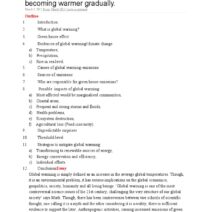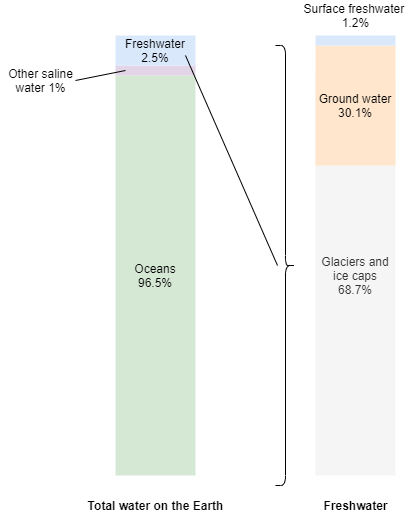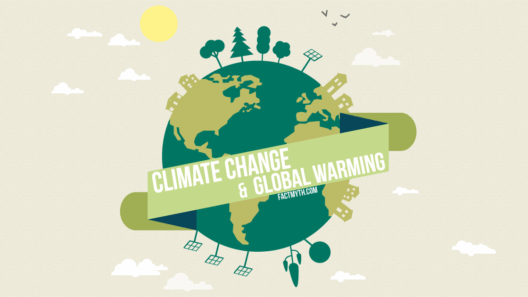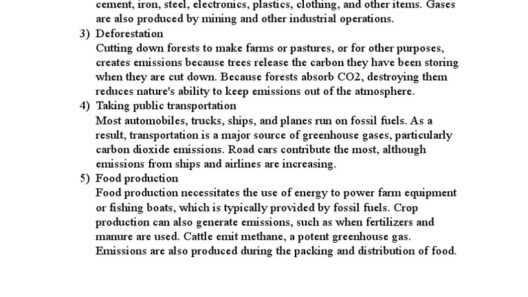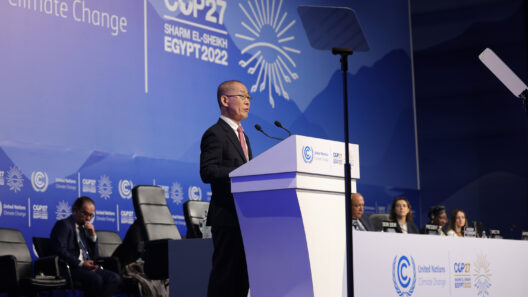Global warming represents one of the most pressing challenges of our time, catalyzing a myriad of environmental, social, and economic crises. As the Earth’s average temperature continues to rise due to anthropogenic emissions, the urgency to curtail these trends becomes increasingly paramount. This article delves into actionable strategies that individuals, communities, and governments can implement to mitigate global warming, fostering both curiosity and a shift in perspective regarding climate dynamics.
Understanding Global Warming: The Science Behind the Phenomenon
At its core, global warming results from the greenhouse effect, a natural phenomenon exacerbated by human activities. When fossil fuels such as coal, oil, and gas are burned, they release carbon dioxide (CO2) and other greenhouse gases into the atmosphere. These gases trap heat from the sun, leading to an increase in Earth’s temperature. While a certain level of greenhouse gases is vital for maintaining a habitable climate, excessive concentrations lead to climate change, resulting in severe consequences like rising sea levels, intensified weather patterns, and biodiversity loss.
The temperature increase is not just a statistic; it translates into existential threats. Ecosystems are under duress, polar ice caps are melting, and communities globally experience extreme weather, from hurricanes to droughts. Understanding this scientific basis is crucial for galvanizing action toward profound change.
Rethinking Energy Consumption: Transitioning to Renewable Resources
The transition from fossil fuels to renewable energy sources stands as one of the most critical pivots in combating global warming. Renewable energy—derived from natural processes that are replenished constantly—includes solar, wind, hydroelectric, and geothermal systems. By harnessing these inexhaustible resources, we can dramatically reduce greenhouse gas emissions.
Solar power, for instance, offers a decentralized energy model, enabling homes and businesses to generate their own electricity. The installation of solar panels, though initially a financial commitment, eventually leads to savings on energy bills and minimal maintenance costs. Wind energy, too, has burgeoned into one of the most cost-effective electricity sources globally. By investing in renewables while phasing out fossil fuels, we can shift the paradigm of energy consumption to one that is sustainable and equitable.
Moreover, promoting energy efficiency in our homes and workplaces plays a fundamental role in reducing energy use. Small changes, such as upgrading to energy-efficient appliances, enhancing insulation, and utilizing smart thermostats, can lead to significant reductions in carbon footprints. Collectively, these efforts have the potential to diminish demand for fossil fuels and lower harmful emissions, creating a healthier ecosystem.
Transforming Transportation: The Road to Sustainable Mobility
Transportation is a major contributor to greenhouse gas emissions, accounting for about 14% of global emissions. To address this, a fundamental transformation in how we view mobility is necessary. The adoption of electric vehicles (EVs), public transportation, and alternative modes of transport like cycling and walking presents an opportunity to significantly reduce our carbon outputs.
Electric vehicles, powered by clean energy, can eliminate tailpipe emissions entirely. As battery technology advances and charging infrastructure expands, consumer adoption is poised to increase. For those unable to transition to EVs, utilizing public transport reduces the number of vehicles on the roads. Enhancing public transportation systems must become a priority for urban planning, providing efficient, reliable, and affordable options for commuters.
Furthermore, cultivating a culture of walking and cycling can transform urban landscapes. Cities designed around pedestrian and cyclist safety not only reduce emissions but also foster healthier, more vibrant communities. Additionally, carpooling and ride-sharing initiatives can optimize existing vehicle usage, minimizing the number of trips made. A comprehensive approach to transportation can shift the narrative from reliance on fossil fuels to sustainable urban mobility.
Advocacy and Education: Mobilizing Collective Action
While individual actions are crucial, grassroots movements and effective policy advocacy hold the power to transform societal norms and influence governmental regulations. Education plays a pivotal role in this tapestry; as awareness grows, public interest in sustainability will burgeon. Empowering individuals with knowledge about climate change facilitates informed decisions and sparks collective action.
Engaging local communities through workshops, seminars, and awareness campaigns can galvanize instant change. From grassroots environmental movements to lobbying for more stringent climate policies, collective advocacy amplifies public voices. When individuals unite to demand sustainable practices from corporations and governments, they cultivate a more significant impact on systemic change.
Moreover, integrating climate education into school curriculums ensures future generations prioritize environmental stewardship. Teaching young minds about the science of climate change, its repercussions, and viable solutions fosters a generation that values sustainability. This educational framework nurtures critical thinking skills and empowers youth to become advocates for change, instilling lifelong commitments to protecting the planet.
In Conclusion: A Unified Approach to Limit Global Warming
Limiting global warming necessitates comprehensive strategies that intertwine technological advancements, policy reform, and grassroots activism. By transitioning to renewable energy, revolutionizing transportation, and emphasizing education and advocacy, we can confront this global challenge. The strength lies not within a singular solution but through an amalgamation of efforts that cultivate environmental awareness and inspire action. A united front can alter the trajectory of our climate crisis, steering it toward a sustainable and resilient future for all living beings.


